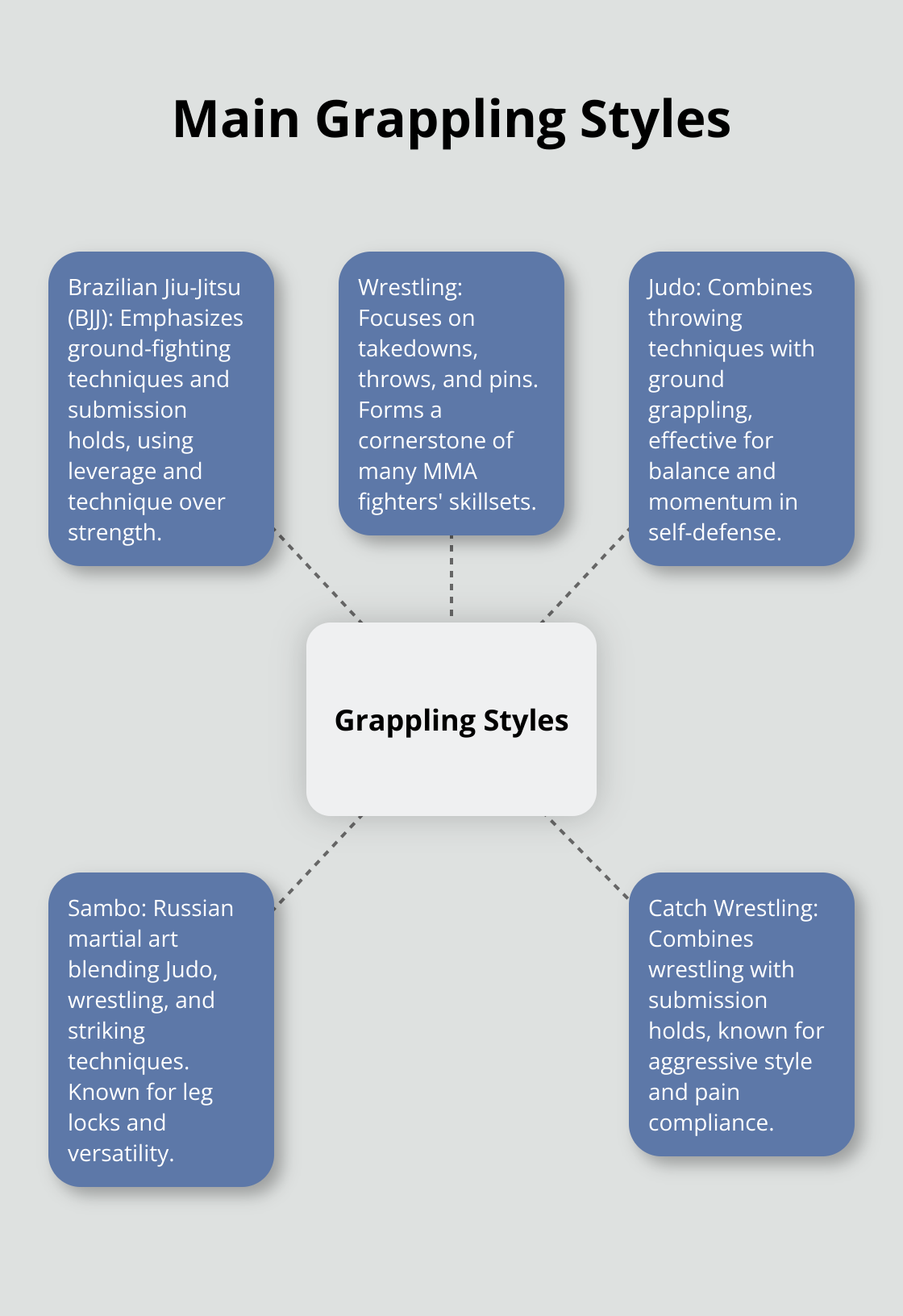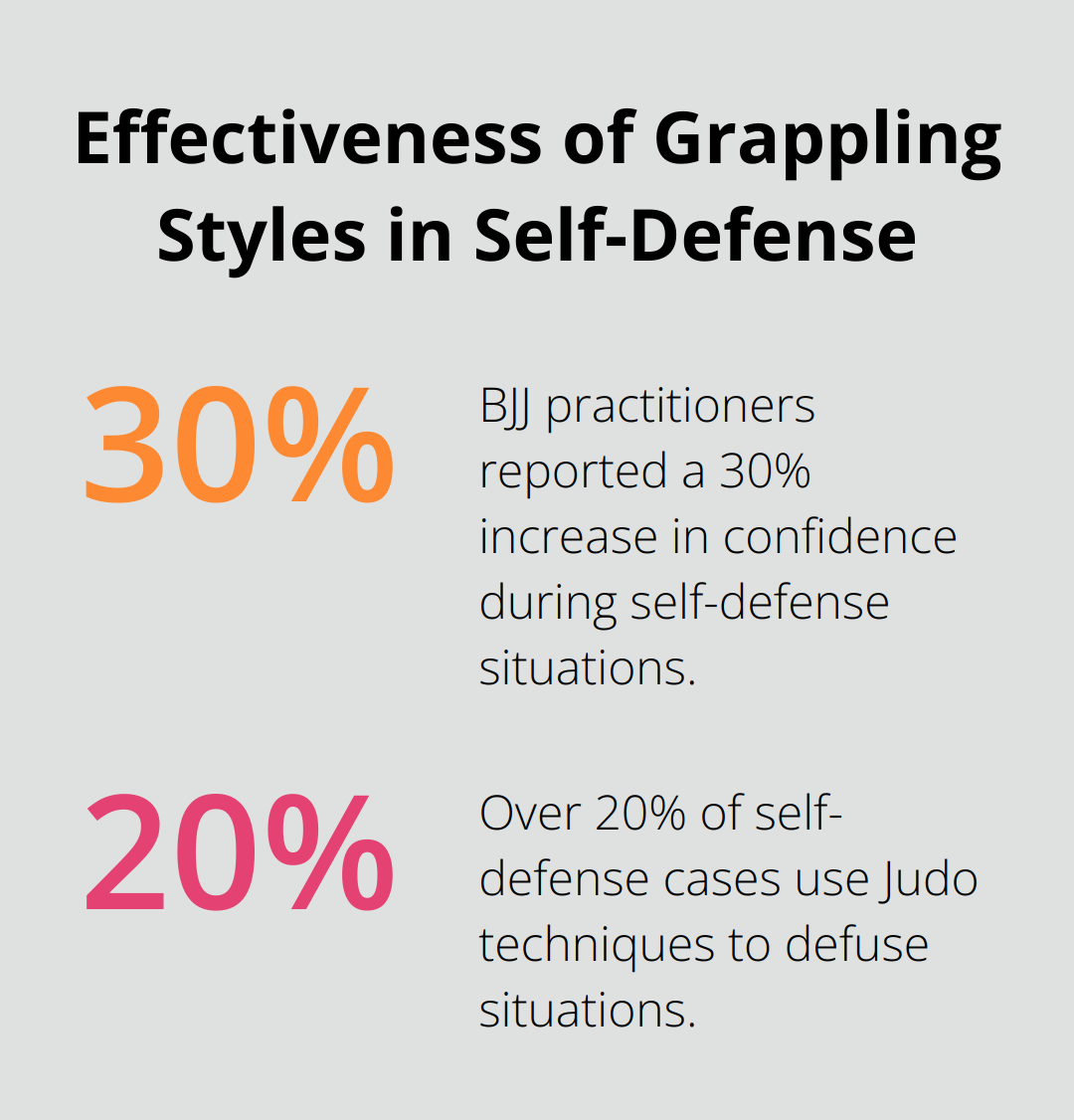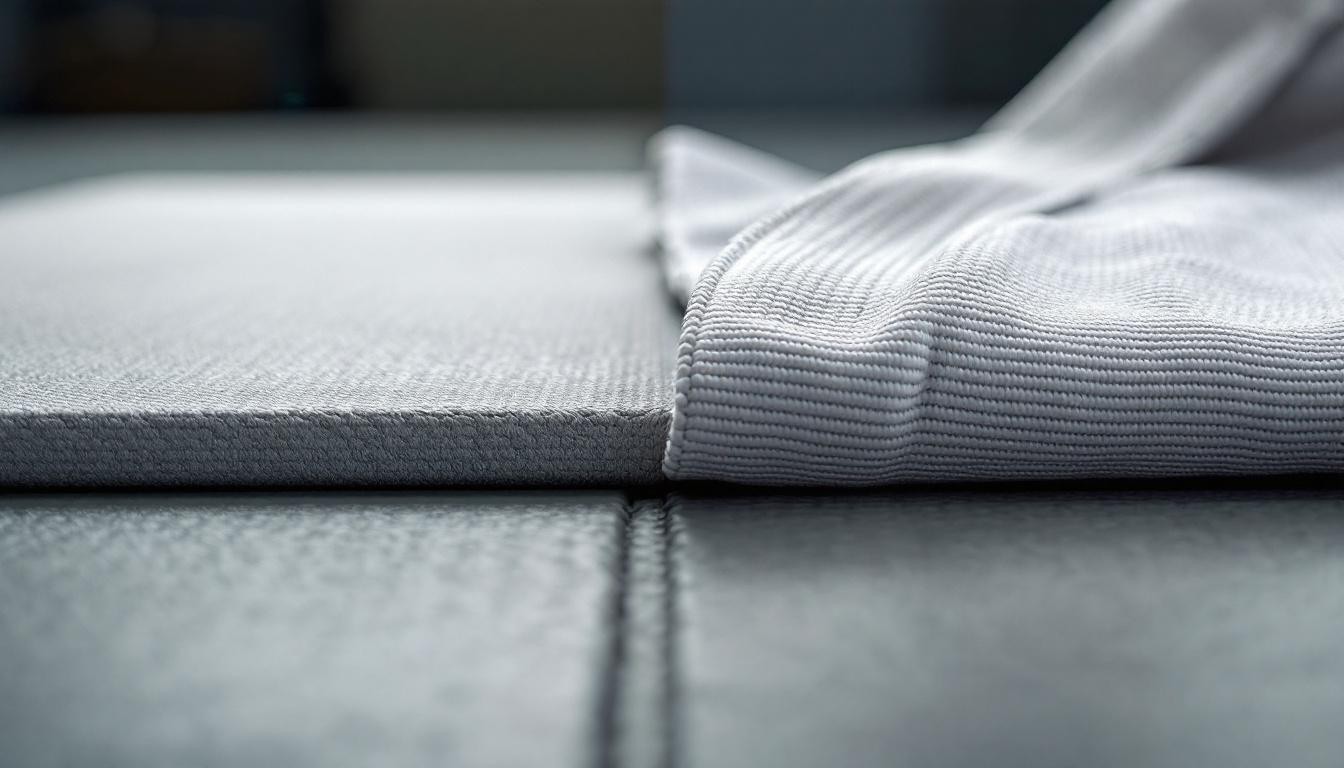At Jiu jitsu, we often get asked about the differences between grappling styles. This blog post will compare various techniques, including wrestling vs Jiu Jitsu, to help you understand their unique strengths and applications.
We’ll explore the effectiveness of each style in different scenarios and examine the key factors that influence grappling performance. By the end, you’ll have a clearer picture of which grappling style might best suit your goals and interests.
Main Grappling Styles: A Comprehensive Overview
Brazilian Jiu-Jitsu (BJJ)
BJJ stands out for its ground-fighting techniques and submission holds. It emphasizes leverage and technique over raw strength, making it effective for practitioners of all sizes.
Wrestling
Wrestling, one of the oldest forms of grappling, focuses on takedowns, throws, and pins. It forms a cornerstone of many MMA fighters’ skillsets.
Judo
Judo combines throwing techniques with ground grappling. Its emphasis on balance and momentum makes it particularly effective in self-defense situations.
Sambo
Sambo, a Russian martial art, blends elements of Judo and wrestling with striking techniques. It’s known for its leg locks and versatility. While less common in the West, Sambo has produced numerous successful MMA fighters.
Catch Wrestling
Catch Wrestling (often called “catch-as-catch-can”) combines wrestling with submission holds. It’s known for its aggressive style and focus on pain compliance.
At Souza Grappling Co., we incorporate elements from various grappling styles into our training programs. This approach ensures our students develop a well-rounded skill set, adaptable to different scenarios. There is no secret martial art or set of techniques that is superior to a well rounded BJJ/wrestling/kick boxing skillset.

Our next section will explore how these grappling styles perform in various real-world situations, from self-defense to competitive sports.
How Effective Are Grappling Styles in Real-World Scenarios?
Self-Defense Situations
Brazilian Jiu-Jitsu (BJJ) and Judo prove highly effective in self-defense scenarios. BJJ’s ground control allows practitioners to neutralize attackers without causing severe harm. A Martial Arts Research Society study found BJJ practitioners reported a 30% increase in confidence during self-defense situations.
Judo’s throwing techniques can quickly end confrontations. The International Federation of Judo reports that over 20% of self-defense cases use judo techniques to defuse situations. Wrestling’s emphasis on takedowns and control makes it equally valuable in self-defense.

Competitive Sports
In Mixed Martial Arts (MMA) competitions, wrestling shows remarkable effectiveness. Many successful MMA fighters have strong wrestling backgrounds, dominating opponents with superior takedowns and ground control. BJJ also plays a significant role in MMA, particularly in submission victories.
Sport-specific tournaments showcase the strengths of each grappling style. BJJ competitions focus on ground techniques and submissions, while Judo tournaments emphasize throws and pins. Sambo competitions combine elements of both, adding leg locks to the mix.
The ADCC Submission Wrestling World Championship is considered the most prestigious submission grappling competition on the planet. This illustrates the importance of cross-training for competitive success.
Professional Applications
Military and law enforcement agencies worldwide incorporate grappling techniques into their training programs. The U.S. Army Combatives program draws heavily from BJJ and wrestling. These techniques allow personnel to control suspects or enemies without resorting to lethal force.
Sambo (originally developed for the Soviet military) offers combat-ready techniques that are particularly useful in high-stress situations. Its versatility makes it adaptable to different environments, from confined spaces to open areas.
Each grappling style has its strengths in different scenarios. Cross-training develops a comprehensive skill set, preparing practitioners for a wide range of real-world situations. The next section will explore the key factors that influence grappling effectiveness across these various scenarios.
What Makes a Grappler Effective?
Physical Attributes
Strength, flexibility, and endurance form the foundation of grappling performance. Research suggests that resistance training plays a significant role in increasing power and strength in wrestlers. Flexibility allows better technique execution and reduces injury risk. Endurance proves vital in longer matches or multiple-round tournaments.
A balanced training regimen improves these attributes. This includes strength training, yoga for flexibility, and high-intensity interval training (HIIT) for endurance. Muay Thai classes build overall athleticism and cardiovascular fitness.
Technical Proficiency
Mastery of techniques underpins effective grappling. A survey by the International Brazilian Jiu-Jitsu Federation revealed that black belt practitioners spend an average of 10 years honing their skills. This highlights the need for consistent, long-term training.
Drilling and situational sparring develop technical proficiency. Instructors focus on proper form and timing, ensuring students apply techniques effectively under pressure. Regular attendance and focused practice lead to improvement.
Mental Toughness and Strategy
The psychological aspect of grappling often goes underestimated. A study in the Journal of Sports Sciences found that mental toughness accounted for up to 25% of performance variance in competitive wrestlers. Strategic thinking, adaptability, and the ability to remain calm under pressure prove essential.

Visualization techniques and stress-inducing drills help develop mental toughness. Coaches emphasize the importance of developing a game plan and adapting it mid-match when necessary.
Training Methods and Frequency
The quality and frequency of training significantly impact grappling effectiveness. Research published in the International Journal of Sports Physiology and Performance suggests that high-frequency, varied training leads to better skill retention and performance.
A minimum of three sessions per week results in noticeable improvement. A varied curriculum (including Jiu-Jitsu, Muay Thai, and Yoga) provides a well-rounded approach to grappling fitness.
Adaptability to Different Rulesets
Successful grapplers must demonstrate versatility. The ability to adapt to different rulesets proves essential, especially for those competing in various disciplines. For instance, the transition from BJJ to MMA requires adjustments in strategy and technique.
Cross-training and participation in different types of competitions help develop a more comprehensive skill set and improve overall grappling effectiveness.
Final Thoughts
Grappling styles offer unique strengths for competition and self-defense. Brazilian Jiu-Jitsu excels in ground control, while wrestling dominates with powerful takedowns. Judo’s dynamic throws and Sambo’s versatile techniques complete the major styles, each providing valuable skills.
The wrestling vs Jiu Jitsu debate highlights the benefits of both disciplines. Wrestling’s explosive power complements BJJ’s technical ground game, creating a formidable combination. Cross-training in multiple styles enhances performance and adaptability to different scenarios and rulesets.
At Souza Grappling Co., we offer a blend of Jiu-Jitsu, Muay Thai, and Yoga classes (providing a well-rounded martial arts education). Our expert instructors help you achieve fitness goals, learn effective self-defense, and join a supportive community. The grappling journey continues, offering a lifetime of learning and growth.




